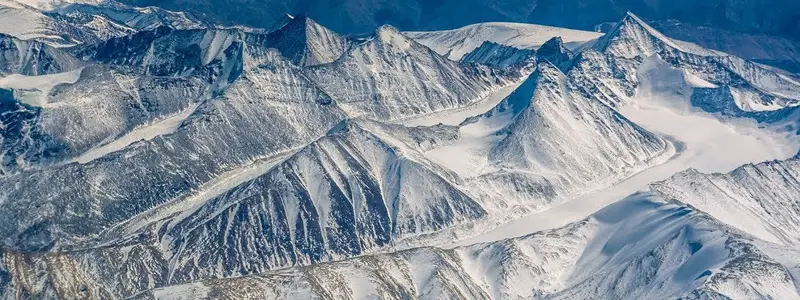The great Himalaya Mountain Range formed as a result of tectonic forces driving two continental plates towards each other, the Indian and Eurasian Plates.
The Himalaya Mountains are best known for their immense peaks, such as the towering Mt. Everest, which stands at 8,848 meters (29,029 feet) above sea level and is the highest mountain on Earth. Besides Mt. Everest, the Himalayas contain many other high peaks, making it the highest mountain range on Earth. Stretching over 2,900 km along the border between the Tibetan Plateau and India, the Himalayas are evidence of plate tectonics and what happens when two continents collide.
The Indian and Eurasian Plates
All of today’s continental and oceanic plates started off connected as part of one big continental plate called the supercontinent Pangea. There were many supercontinents before Pangea, but Pangea is the last supercontinent that broke up to form today’s continents. This supercontinent had broken up and the pieces were starting to drift from each other about 200 million years ago. At this time India was a large island in very close proximity to the continental islands of Australia and Antarctica. By about 80 million years ago, India was located approximately 6,400 kilometers south of the Eurasian plate.
The northward movement of the Indian plate began about 71 million years ago and the rate of movement was about 9 meters per 100 years. At about 55 million years ago, the northern tip of the Indian plate was crossing the equator, and about 40 million years ago it rammed into the Eurasian plate. The Indian plate was also rotating counterclockwise as it drifted northward. At the beginning of the Indian plate’s journey, the small island of Sri Lanka was attached and located southwest of the Indian plate. By the time the Indian plate rotated and collided with the Eurasian plate, Sri Lanka was situated to the southeast of the Indian plate and remains in this position today.
Uplift of the Himalayas
The rate of northward drifting of the Indian plate naturally slowed soon after it collided with the Eurasian plate. Scientists estimate the new rate of drifting was about half what it was before the collision occurred, so about 4.5 meters per 100 years. The two plates were now being pushed against one another in what would be called a convergent plate boundary environment. There are two kinds of convergent plate boundaries. One is an ocean-continent convergent plate boundary, in which the water-heavy oceanic slab is subducted underneath the lighter continental slab. The other is a continent-continent convergent plate boundary, in which both slabs have equal density, so instead of one getting buried underneath the other, they both buckle at the plate boundary, and crust is pushed upwards, as it is in the Himalayas.

In the 40 to 50 million years since the Indian plate has collided with the Eurasian plate, the crust that forms the Himalayas has been uplifted more than 9 kilometers, and the uplifting has not stopped. Even today, these two plates are still converging and pushing up the crust, adding to the height of the Himalayas at a rate of about 1 centimeter per year. This kind of tectonic stress has its consequences on local and regional populations. Some of the most tectonically active areas in the world are located throughout Asia and regions of the Indian and Pacific Oceans, leading to devastating earthquakes and tsunamis.
